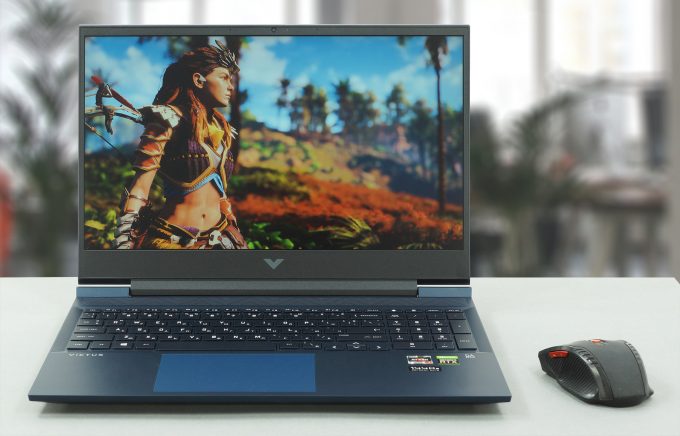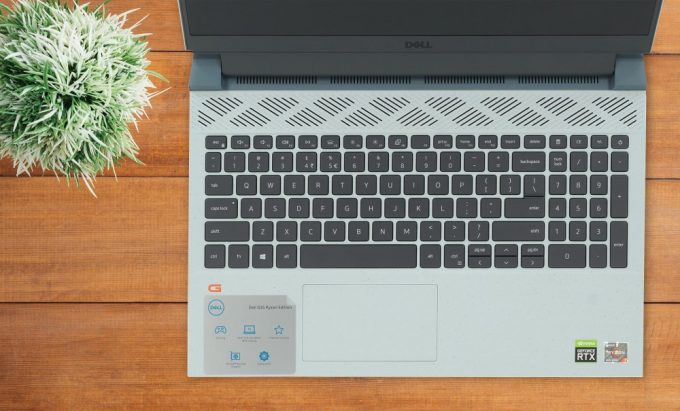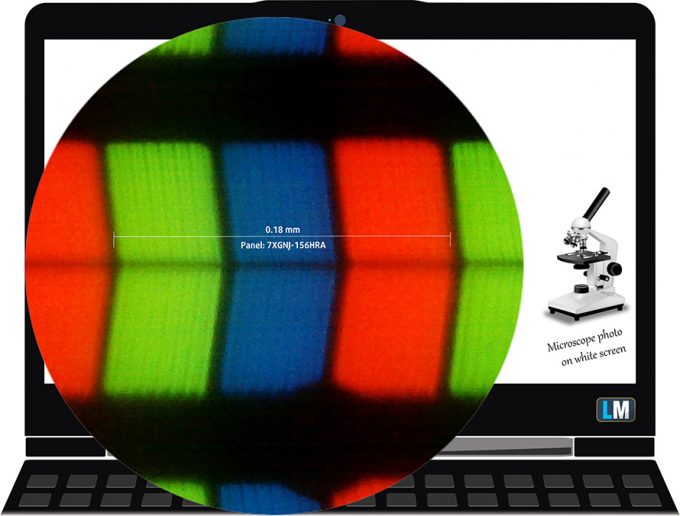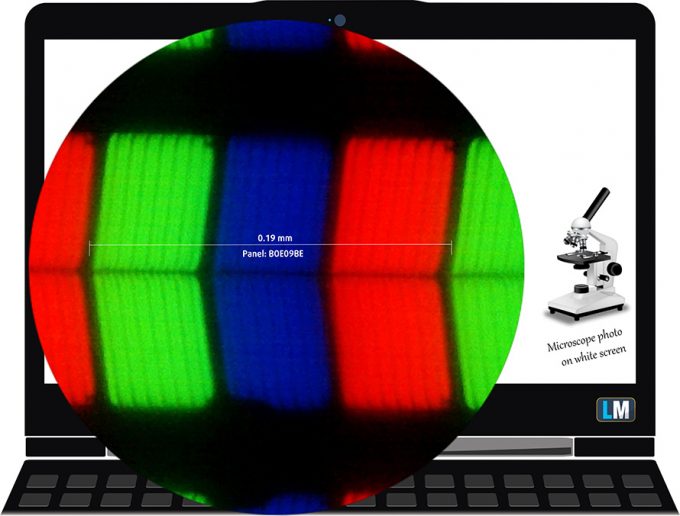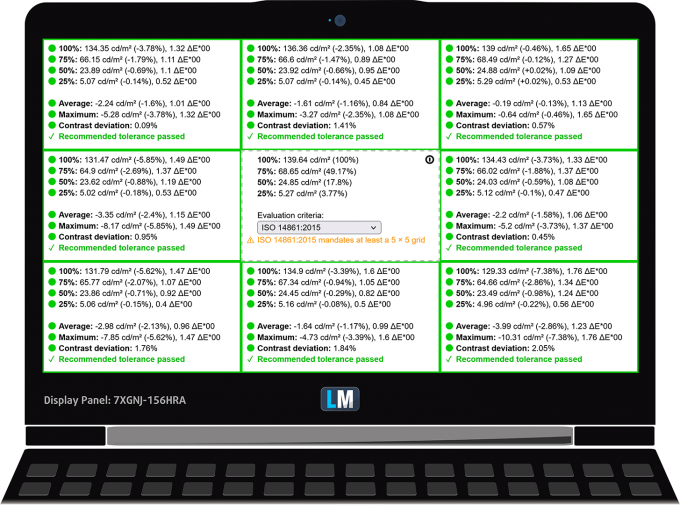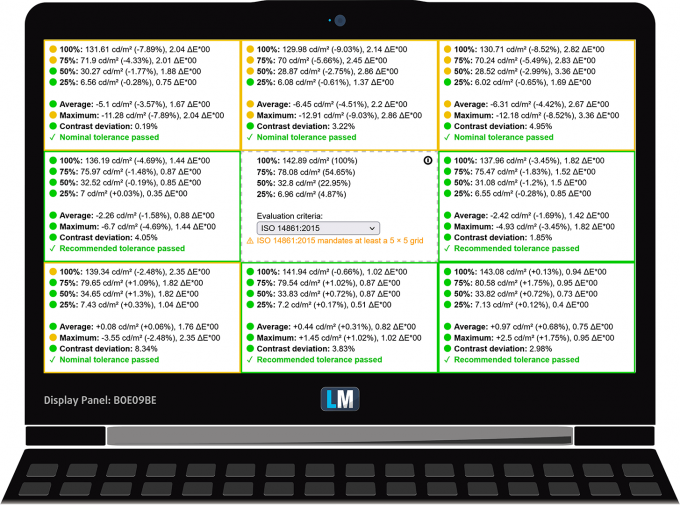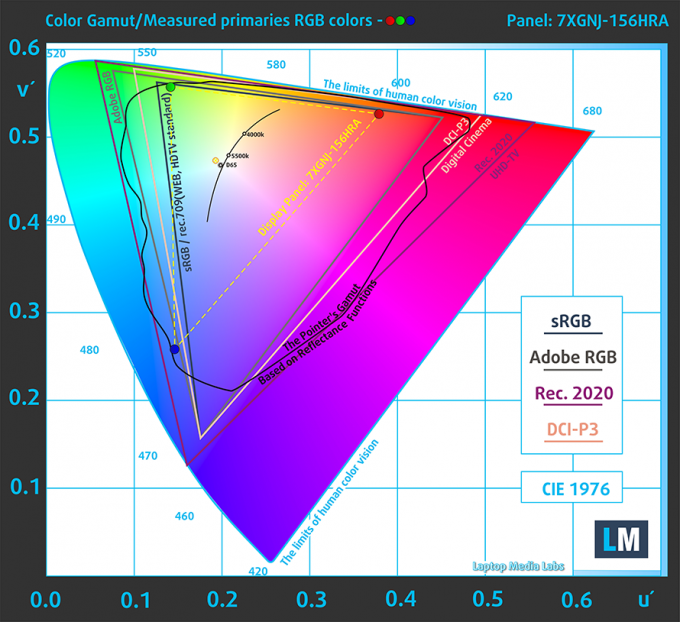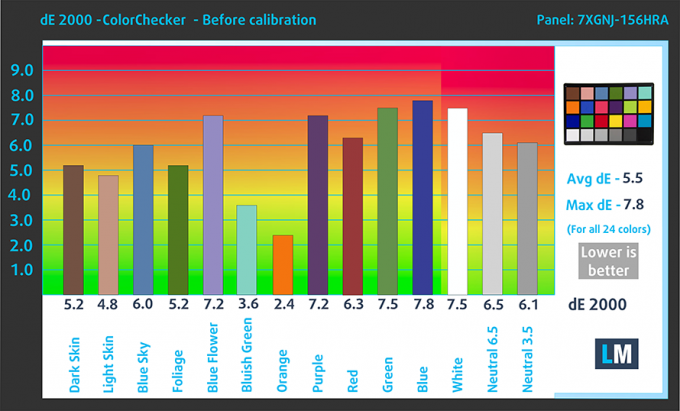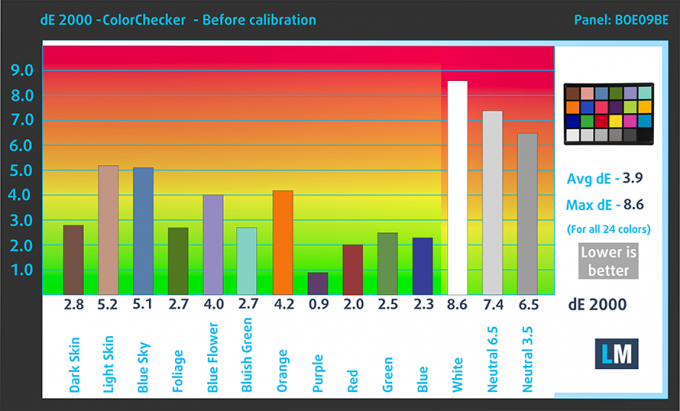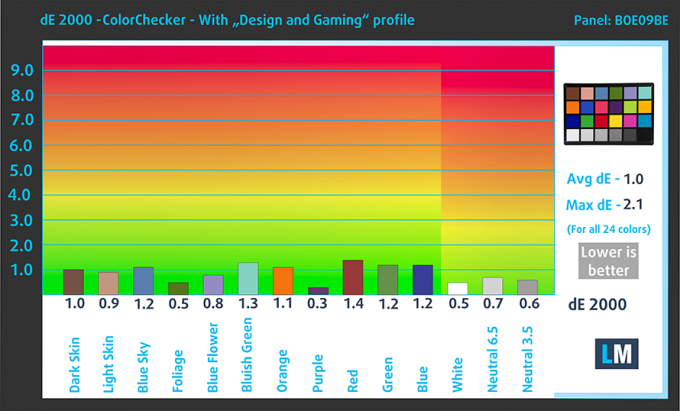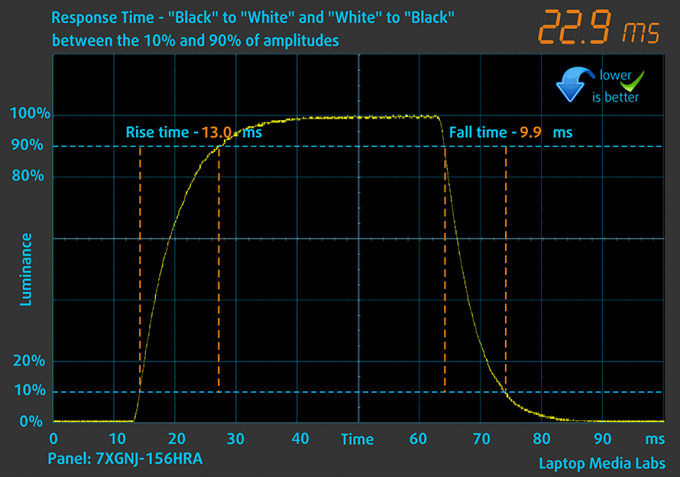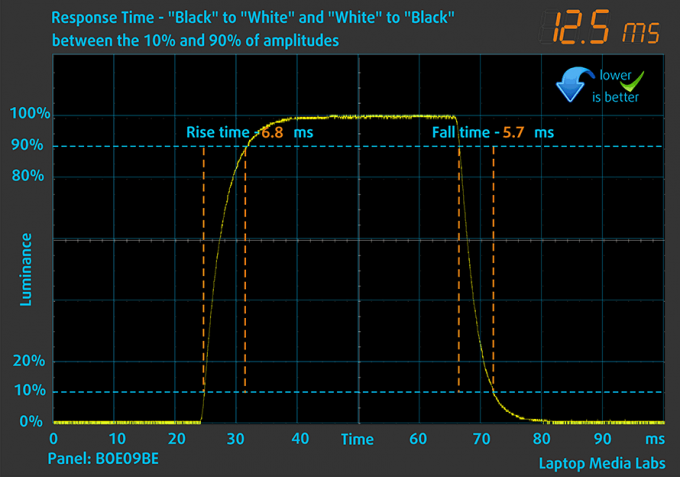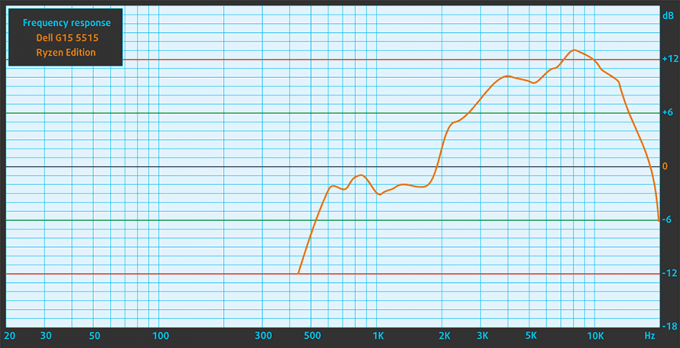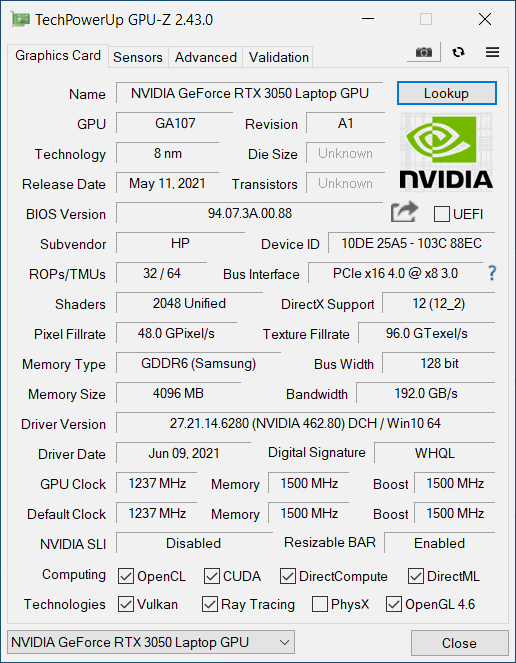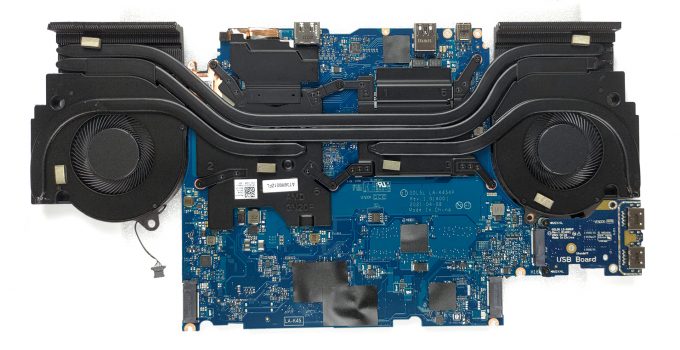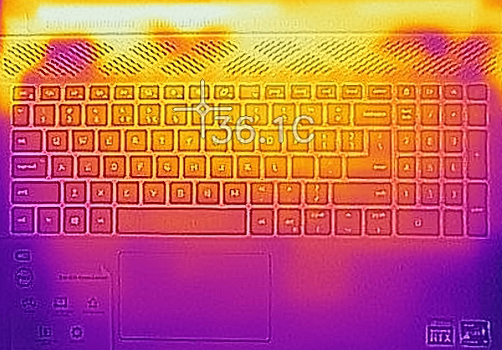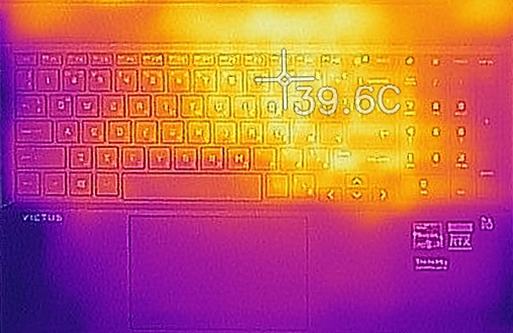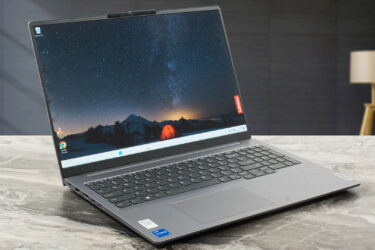[In-Depth Comparison] Dell G15 5515 vs HP Victus 16 (16-e0000) – budget gaming laptops keep getting better
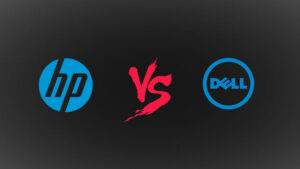 Budget and mid-range gaming devices have improved a lot. This is generally because powerful hardware is much more accessible even at the lower end, with GPUs such as the RTX 3050 and RTX 3050 Ti. Today we have two offerings, which are trying to do a similar thing but are doing it in very different ways.
Budget and mid-range gaming devices have improved a lot. This is generally because powerful hardware is much more accessible even at the lower end, with GPUs such as the RTX 3050 and RTX 3050 Ti. Today we have two offerings, which are trying to do a similar thing but are doing it in very different ways.
The Dell G15 5515 is strictly a gaming notebook, bringing a more aggressive aesthetic and strict focus on performance. The HP Victus 16 tries to be a content creation/gaming notebook and is kind of successful at it. As for what will happen today, these two notebooks will go toe to toe, to see which of them is an overall better device.
Today we are giving you an in-depth comparison between the Dell G15 5515 and the HP Victus 16 (16-e0000).
Dell G15 5515: Full Specs / In-depth Review
HP Victus 16 (16-e0000): Full Specs / In-depth Review
Dell G15 5515 configurations:
HP Victus 16 (16-e0000) configurations:
Contents
Design and construction
The plastic design is definitely a tell for the laptop’s budget nature. The Dell G15 looks like a rebranded Alienware laptop, which it basically is. The design is the same, with an extended rear end, vents on the left and right sides, and a very similar lid shape. The two-tone finish doesn’t contrast but rather compliments itself, with grey for the rear and creme white for the front. As with other Dell G15 and G5 laptops, we see speckles inside the material itself, which gives it a bit of character.
The Victus 16 takes a very different approach, focusing on a minimal and sleek exterior that is still fully plastic. The flat boxy shape has a well-sized V-badge on the lid. Overall the whole chassis looks extremely similar to the Pavilion Gaming 16, which would be smart of HP as it will definitely bring the final cost of the device down.
| Weight | Height | |
|---|---|---|
| Dell G15 5515 | 2.81 kg (6.2 lbs) | 21.21 ~ 24.90 mm (0.84″) |
| HP Victus 16 (16-e0000) | 2.46 kg (5.4 lbs) | 23.6 mm (0.93″) |
Keyboard and touchpad
The base of the G15 houses a huge heat vent, along with a pretty large keyboard. In fact, the unit is identical to the one inside the Dell Precision 15 3561, featuring a NumPad, along with rounder keycaps and two backlight configurations: a blueish white or a 4-zone RGB backlight. It has medium-long key travel and decent feedback. We would have wanted to see a better unit here, or at least one with decently sized arrow keys. The touchpad is accurate and responsive but has a small size and the clicking mechanism has a dead zone, which will get annoying.
The Victus 16’s keyboard is very comfortable, featuring long key travel and clicky feedback. There is a backlight, as well, as we can’t forget about nighttime gaming. However, the arrow keys here are freakishly small compared to the rest. The touchpad does come in a different color, but it works well enough so we won’t judge HP for it.
Ports
The Dell G15 brings a total of three USB Type-A ports, with the ones on the right side coming in 2.0 speeds in the models with the RTX 3050 and RTX 3050 Ti, and in 3.2 speeds in models with the RTX 3060. The third port has 3.2 speeds, regardless of the GPU. In addition to them, you also get a USB Type-C 3.2 (Gen. 2) port, an HDMI connector, a power plug, a 3.5 mm audio jack, and a drop-jaw Ethernet connector.
On the Victus 16, we get no misleading USB speeds, with three USB Type-A 3.2 (Gen. 1) ports, a single USB Type-C 3.2 (Gen. 1), Ethernet and HDMI connectors, a 3.5 mm audio jack, a charging plug, and an SD card reader.
Dell G15 5515
HP Victus 16 (16-e0000)
Spec sheet
Dell G15 (5515) series
- Dimensions
- 357.26 x 272.11 x 21.21 ~ 24.90 mm (14.07" x 10.71" x 0.84")
- Weight
- 2.81 kg (6.2 lbs)
- Price
- Starting at $1749.00
HP Victus 16 (16-d0000, e0000) series
- GPU
- NVIDIA GeForce RTX 3060 (Laptop) #121 in Top GPUsNVIDIA GeForce RTX 3050 Ti (Laptop, 75W) #153 in Top GPUsNVIDIA GeForce RTX 3050 (Laptop, 75W) #173 in Top GPUsNVIDIA GeForce RTX 3050 (Laptop) #183 in Top GPUsNVIDIA GeForce GTX 1650 (Laptop) #202 in Top GPUsAMD Radeon RX Vega 7 (R4000/5000, 35/45W) #242 in Top GPUsAMD Radeon RX 5500M (4GB GDDR6)AMD Radeon Pro 5500M (4GB GDDR6)
- Dimensions
- 370 x 260 x 23.6 mm (14.57" x 10.24" x 0.93")
- Weight
- 2.46 kg (5.4 lbs)
- Price
- Starting at $1149.99
Disassembly, upgrade options
Both devices offer plenty of upgradeability, with two SODIMM RAM slots that can handle up to 64 GB of DDR4 memory, along with two M.2 PCIe x4 SSD slots. Both laptops are also easy to disassemble, using a total of 8 Phillips-head screws.
Display quality
The G15 has two 15.6-inch Full HD IPS display options with either 120Hz or 165Hz. The Victus 16 offers two 16.1-inch Full HD IPS panels with either a 60Hz or 144Hz refresh rate. The Dell display that we tested has a pixel density of 142 PPI, a pitch of 0.18 x 0.18 mm, and a Retina distance of 60 cm. The HP panel that we reviewed offered a slightly lower PPI of 132, a pitch of 0.19 x 0.19 mm, and a Retina distance of 64 cm.
Both displays have excellent viewing angles. We offer images at 45° to evaluate image quality.
The Dell laptop has fantastic brightness uniformity, with a max brightness of 255 nits in the middle of the screen and 244 nits average across the surface with a maximum deviation of 8%. The contrast ratio is pretty high – 1540:1.
The HP Victus 16 does perform slightly worse from a uniformity perspective, but it brings a higher max brightness of 368 nits in the middle of the screen and 353 nits as an average for the whole area, with a maximum deviation of 9%.
Color coverage
To make sure we are on the same page, we would like to give you a little introduction to the sRGB color gamut and the Adobe RGB. To start, there’s the CIE 1976 Uniform Chromaticity Diagram that represents the visible specter of colors by the human eye, giving you a better perception of the color gamut coverage and the color accuracy.
Inside the black triangle, you will see the standard color gamut (sRGB) that is being used by millions of people on HDTV and on the web. As for the Adobe RGB, this is used in professional cameras, monitors, etc for printing. Basically, colors inside the black triangle are used by everyone and this is the essential part of the color quality and color accuracy of a mainstream notebook.
Still, we’ve included other color spaces like the famous DCI-P3 standard used by movie studios, as well as the digital UHD Rec.2020 standard. Rec.2020, however, is still a thing of the future and it’s difficult for today’s displays to cover that well. We’ve also included the so-called Michael Pointer gamut, or Pointer’s gamut, which represents the colors that naturally occur around us every day.
The yellow dotted line shows the color coverage of both the Dell G15 5515 and the HP Victus 16 (16-e0000).
The Dell G15 covers only 51% of the sRGB color gamut, while the Victus 16 covers 99%.
Color accuracy
We tested the accuracy of the display with 24 commonly used colors like light and dark human skin, blue sky, green grass, orange, etc. You can check out the results at factory condition and also, with the “Design and Gaming” profile.
Below you can check the results from the test of both laptops, with both the factory settings (left) and with our “Design and Gaming” profile applied (right).
Dell G15 5515
HP Victus 16 (16-e0000)
Response time (Gaming capabilities)
We test the reaction time of the pixels with the usual “black-to-white” and “white-to-black” methods from 10% to 90% and vice versa.
The Victus 16 had a faster Fall + Rise time of 12.5 ms.
Health Impact / PWM (Blue light)
PWM – screen flickering
Pulse-width modulation (PWM) is an easy way to control monitor brightness. When you lower the brightness, the light intensity of the backlight is not lowered, but instead turned off and on by the electronics with a frequency indistinguishable to the human eye. In these light impulses, the light/no-light time ratio varies, while brightness remains unchanged, which is harmful to your eyes. You can read more about that in our dedicated article on PWM.
In terms of flickering both panels show no usage of PWM across any brightness levels.
Blue light emissions
Installing our Health-Guard profile not only eliminates PWM but also reduces the harmful Blue Light emissions while keeping the colors of the screen perceptually accurate. If you’re not familiar with the Blue light, the TL;DR version is – emissions that negatively affect your eyes, skin, and your whole body. You can find more information about that in our dedicated article on Blue Light.
Buy our profiles
Dell G15 5515 15.6″ Innolux 7XGNJ-156HRA (CMN1522) (FHD, 1920 × 1080) IPS – Buy our profiles
HP Victus 16 (16-e0000) 16.1″ Full HD IPS BOE BOE09BE – Buy our profiles
Sound
The Dell laptop has a bottom-firing setup that shows no deviations from clarity, but the sound that it produces is a bit quiet, albeit still of good quality.
The HP device has front-firing speakers from Bang & Olufsen, which produce good quality audio.
Battery
The way we conduct our battery tests is with the Windows Better performance setting turned on, screen brightness adjusted to 120 nits, and all other programs turned off except for the one we are testing the notebook with. The Victus 16 does have a beefier battery pack with a size of 70Wh, while the G15 has a 53Wh battery unit. In the web browsing test, the HP laptop lasted for 2 hours and 10 minutes more. The Dell G15 did score better in the video playback though, with a lead of 23 minutes.
In order to simulate real-life conditions, we used our own script for automatic web browsing through over 70 websites.
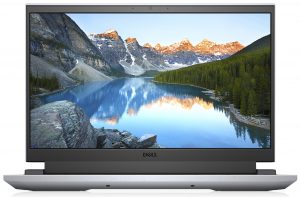
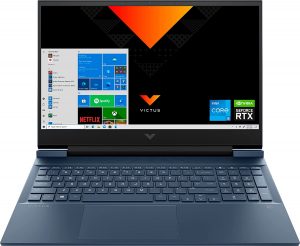
For every test like this, we use the same video in HD.


Performance
Both laptops offer either the Ryzen 5 5600H or the Ryzen 7 5800H. For the graphics, you can choose between the RTX 3050, RTX 3050 Ti, and the RTX 3060. The Victus 16 also offers the GTX 1650. However, the GPUs inside the Victus laptop do have lower TGPs.
CPU benchmarks
Here we tested the Ryzen 7 5800H inside both laptops. The one inside the Victus 16 scored 2% higher in the 3D Rendering test and was 0.2 seconds faster in Photoshop.
Results are from the Cinebench R23 CPU test (the higher the score, the better)
Results are from our Photoshop benchmark test (the lower the score, the better)
GPU benchmarks
On the other hand, the graphics cards inside of these machines are the RTX 3050 Ti (90W) and the RTX 3050 (75W). Unsurprisingly, the RTX 3050 Ti is more powerful in all three benchmarks, however, the RTX 3050 is very competitive in all tests, despite having a lower TGP. Still, the 3050 Ti scored 14%, 3%, and 19% higher in 3DMark Fire Strike, Unigine Heaven 4.0, and Unigine Superposition, respectively.
Results are from the 3DMark: Time Spy (Graphics) benchmark (higher the score, the better)
Results are from the 3DMark: Fire Strike (Graphics) benchmark (higher the score, the better)
Results are from the Unigine Superposition benchmark (higher the score, the better)
Gaming tests

| Far Cry 5 | Full HD, Normal (Check settings) | Full HD, High (Check settings) | Full HD, Ultra (Check settings) |
|---|---|---|---|
| Dell G15 5515 – RTX 3050 Ti (90W) | 99 fps (+10%) | 93 fps (+12%) | 88 fps (+14%) |
| HP Victus 16 (16-e0000) – RTX 3050 (75W) | 90 fps | 83 fps | 77 fps |

| Rise of the Tomb Raider (2016) | Full HD, Lowest (Check settings) | Full HD, Medium (Check settings) | Full HD, Very High (Check settings) | Full HD, MAX (Check settings) |
|---|---|---|---|---|
| Dell G15 5515 – RTX 3050 Ti (90W) | 144 fps | 119 fps (+6%) | 65 fps (+18%) | 43 fps (+16%) |
| HP Victus 16 (16-e0000) – RTX 3050 (75W) | 159 fps (+10%) | 112 fps | 55 fps | 37 fps |

| Tom Clancy’s Ghost Recon Wildlands | Full HD, Medium (Check settings) | Full HD, High (Check settings) | Full HD, Very High (Check settings) | Full HD, Ultra (Check settings) |
|---|---|---|---|---|
| Dell G15 5515 – RTX 3050 Ti (90W) | 78 fps (+7%) | 72 fps (+7%) | 63 fps (+7%) | 37 fps (+6%) |
| HP Victus 16 (16-e0000) – RTX 3050 (75W) | 73 fps | 67 fps | 59 fps | 35 fps |
Temperatures and comfort
The Dell G15 comes with a decent cooling solution with four heat pipes. Two of them are shared between the CPU and GPU, with one more for each of them. The Victus 16 has two beefy heat pipes for the processor and graphics.
Max CPU load
In this test we use 100% on the CPU cores, monitoring their frequencies and chip temperature. The first column shows a computer’s reaction to a short load (2-10 seconds), the second column simulates a serious task (between 15 and 30 seconds), and the third column is a good indicator of how good the laptop is for long loads such as video rendering.
Average core frequency (base frequency + X); CPU temp.
| AMD Ryzen 7 5800H (45W TDP) | 0:02 – 0:10 sec | 0:15 – 0:30 sec | 10:00 – 15:00 min |
|---|---|---|---|
| Dell G15 5515 | 3.29 GHz (B+3%) @ 74°C | 3.14 GHz @ 74°C | 3.21 GHz (B+0%) @ 82°C |
| HP Victus 16 (16-e0000) | 3.29 GHz (B+3%) @ 80°C | 3.20 GHz (B+0%) @ 80°C | 3.27 GHz (B+2%) @ 89°C |
Both laptops perform very similarly, having really close clock speeds. The temperatures were higher on the Victus laptop, nearly reaching 90°C in the end.
Real-life gaming
| NVIDIA GeForce RTX 3050 Ti | GPU frequency/ Core temp (after 2 min) | GPU frequency/ Core temp (after 30 min) | GPU frequency/ Core temp (Max fan) |
|---|---|---|---|
| Dell G15 5515 | 1857 MHz @ 76°C @ 80W | 1850 MHz @ 77°C @ 80W | – |
| NVIDIA GeForce RTX 3050 | GPU frequency/ Core temp (after 2 min) | GPU frequency/ Core temp (after 30 min) | GPU frequency/ Core temp (Max Fan) |
|---|---|---|---|
| HP Victus 16 (16-e0000) | 1824 MHz @ 73°C @ 75W | 1814 MHz @ 73°C @ 75W | 1822 MHz @ 73°C @ 75W |
Once again, despite the G15 using a more powerful GPU, it manages to bring similar temperatures and higher clock speeds than the Victus 16.
Comfort during combined load
Both laptops are really cool on the outside, with the outside temperature not going over 40°C. The Dell laptop was the cooler one, with a temperature of only 36.1°C.
Verdict
These two devices are very different, but also manage to be similar. It really is something. The G15 goes all out on the Gamer look, with a speckled two-tone finish with red G logos on the sides. The Victus 16 is much more streamlined and simpler and has a minimal V-logo on the lid while being the lighter device. The HP notebook also brings a more comfortable keyboard and a touchpad without a dead zone, which is appreciated. I/O is essentially similar, with the Victus bringing in an SD card reader.
The HP device has a better display in every metric, bringing a faster response time, color coverage, and accuracy. It is essentially a professional panel in a device that you can afford, making it an attractive offer for both gamers and content creators. However, it does have a better overall battery life, with a two-hour lead in web browsing, while being 23 minutes behind the Dell in the video playback test.
The Ryzen 7 5800H inside the HP Victus also performs better, although by a thin margin. Dell does however bring a more powerful GPU, thus grabbing the win. Well, at least in our case. The cooling is a tie, with both laptops’ processors hovering around the same clock speeds and temperatures, while the graphics aren’t really comparable due to the different specs.
If we were to choose a notebook, we would go with the HP Victus 16. It brings a sleeker exterior, which we appreciate, a more comfortable keyboard, better display, while not sacrificing performance and cooling. It is the more versatile laptop, you can use for both gaming and content creation.
Why choose Dell G15 5515?
- + Offers higher TGP GPUs
Why choose HP Victus 16 (16-e0000)?
- + More comfortable keyboard
- + Fast pixel response times
- + Better battery life
- + Display with high color coverage and good color accuracy
Dell G15 5515: Full Specs / In-depth Review
HP Victus 16 (16-e0000): Full Specs / In-depth Review
Dell G15 5515 configurations:
HP Victus 16 (16-e0000) configurations:

